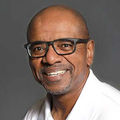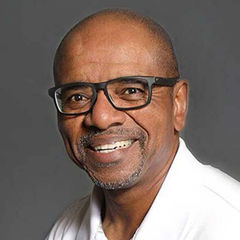“Microaggression” might seem like a new buzzword that has emerged over the past few years as systemic racism and issues related to equity, diversity and inclusion have become topics of very public debate and discussion, but the term has been around since 1970, when Chester Pierce, PhD, a psychiatrist, scholar and Harvard professor coined the term to identify demeaning acts that he described as both “subtle and stunning.”
So, what are microaggressions? They can be defined as brief, commonplace, and daily indignities that convey hostility toward the impacted group or community. They can be glaring and intentional, such as using a racial slur or painting a swastika on a synagogue wall, or they can be unintentional slights against an individual or group, such as repeatedly mispronouncing a person’s name even after being corrected or assuming a person’s role in an organization based on their appearance.
According to Rory G. James, MPH, Director of the Office of Student Diversity and Inclusion at Indiana University – Bloomington and a special advisor to the American Council on Exercise, microaggressions grow from assumptions people make about racialized identities and people of different cultures.
It’s important to highlight the fact that microaggressions are not “micro” events for the individuals or groups on the receiving end, and the terminology should not be misconstrued to mean that the aggressions are not powerful and impactful. In a recent Facebook Live event entitled “Recognizing Racial Microaggressions and Creating an Inclusive Health and Fitness Space,” hosted by Mr. James, he explained that “micro” refers to the frequency of these events and how they build up over time into a pattern that can become quite problematic and emotionally exhausting.
Microaggressions can also have real-world ramifications beyond the emotional and mental impact they have on the individual or group. During the Facebook Live event, James used a scenario in which a hiring committee is discussing candidates for a high-level position at their fitness facility. A member of that committee is concerned about whether a Black candidate would be a good fit for their community and facility members. This type of microaggression, if allowed to pass unchallenged by other members of the committee, impacts that individual’s career prospects, not to mention those of any other person of color who may pursue an opportunity with that employer.
Sue and colleagues expanded upon Dr. Pierce’s work by creating a taxonomy of the three types of microaggressions.
The first is the microassault, which can be verbal or nonverbal. A microassault is an explicit form of bias in which harm is intended. It can be a slur or even a physical attack. For example, threatening to call the police on people when they’re doing innocent activities like hiking or having a barbecue in a public park is a microassault and a threat of harm.
The second is the microinsult. Microinsults are often committed unconsciously and can take the form of insensitive remarks or rude, demeaning acts. For example, commenting on the smell of someone’s lunch when they heat it up in the breakroom is a microinsult, particularly if their meal is from a different culture than that of the speaker. Another example involves commenting that a person of color is well-spoken or articulate or, on the other side of that coin, assuming someone is less intelligent because of the use of vernacular language or because they speak with an accent.
The third is the microinvalidation, which is a comment or behavior that negates the feelings or experiences of another person. James provided a few examples of microinvalidation during the Facebook Live event. People will sometimes say they are “colorblind” to explain that they don’t see or consider a person’s skin color during their day-to-day interactions, and this can be said with the best of intentions. However, it negates the intricacies of a person’s identity. There is a need to acknowledge race when something differential happens to someone else. Consider, for example, a Black man saying they were followed by security while shopping at the mall. Not believing them or saying it happens to everyone invalidates that experience, as does telling them that they’re being too sensitive.
“The insidious nature of microaggressions,” James says, “is the fact that when it happens to you, you’re left carrying that” and begin to question your own understanding of the experience. Maybe that security guard was just doing their job or maybe I imagined it. If you want to be an advocate or ally, it is essential to acknowledge that others may have a different lived experience than you because of their racial identity.
What This All Means for the Fitness Industry
Whether you work as an independent contractor, in facility management or in any of the countless other roles the fitness industry has to offer, a primary objective should be to provide enjoyable physical-activity experiences to everyone, no matter their race, ethnicity, sexuality, gender, age, and so on.
With that in mind, negative interpersonal interactions and microaggressions that take place in and around the facility can be barriers to overall wellness, alongside other social determinants of health, such as economic stability, education level, access to healthy foods and access to adequate healthcare. The last thing you want to do as a professional or business owner is to give people a reason not to use your services. And, on a more human level, treating everyone with respect and dignity and in a way that is empowering and welcoming, is essential.
Think about how your organization, your colleagues or even how you yourself may perpetuate certain beliefs and practices. It’s important to note that microaggressions that occur anywhere in your facility—at the front desk, in the locker rooms or on the gym floor—can be barriers to participation and negatively impact your relationship with clients or gym members.
Also, denial of individual racism or bias is itself a microaggression. We all have biases and beliefs that impact our interactions with others. Denying that your words or actions could negatively impact someone else without you realizing it is a microinvalidation of the lived experience of the person with whom you’re interacting. With that in mind, it’s clear that minimizing the occurrence of microaggressions is difficult and ongoing work for any individual, organization or industry.
What can you do when you commit, see or are the target of a microaggression?
- If you are the target of the microaggression: The person on the receiving end of the microaggression is often burdened with addressing it, and this leads to emotional fatigue. As James said, no one should be forced into educating someone who offended them!
- If you witness a microaggression: There is no easy answer to this question, as your role in the organization and the power dynamics in play may affect your ability to speak up in certain situations. That said, you can often pull someone aside in a collegial way and point out the issues with what you overheard. You might say something like, “Even it was unintentional, the way you said that was problematic. There was a better way you could have handled that.” It can be a powerful moment when a colleague steps up to be an ally to the target of a microaggression.
- If you commit a microaggression: If you ever catch yourself committing a microaggression, don’t just sit in the awkwardness and let the relationship suffer. Acknowledge what you just said and pursue the opportunity to learn. Genuinely apologize and don’t try to explain away the incident. Remember, denying your bias—no matter how unintentional your words or actions may have been—is a microaggression itself.
In Conclusion
Being a better individual and professional requires cultural intelligence and humility. Educate yourself so that you feel empowered to advocate and be an ally for people of color or any other target of microaggression. Remember, clients are coming to you for your professional expertise and as a partner in their wellness journey, so if you belittle their experience or display a lack of concern, that can be very damaging to that relationship. Again, this is ongoing work, from the individual level up to society at large. It starts with acknowledging the existence of microaggressions and their impact on those in your facility and community.




 by
by 







